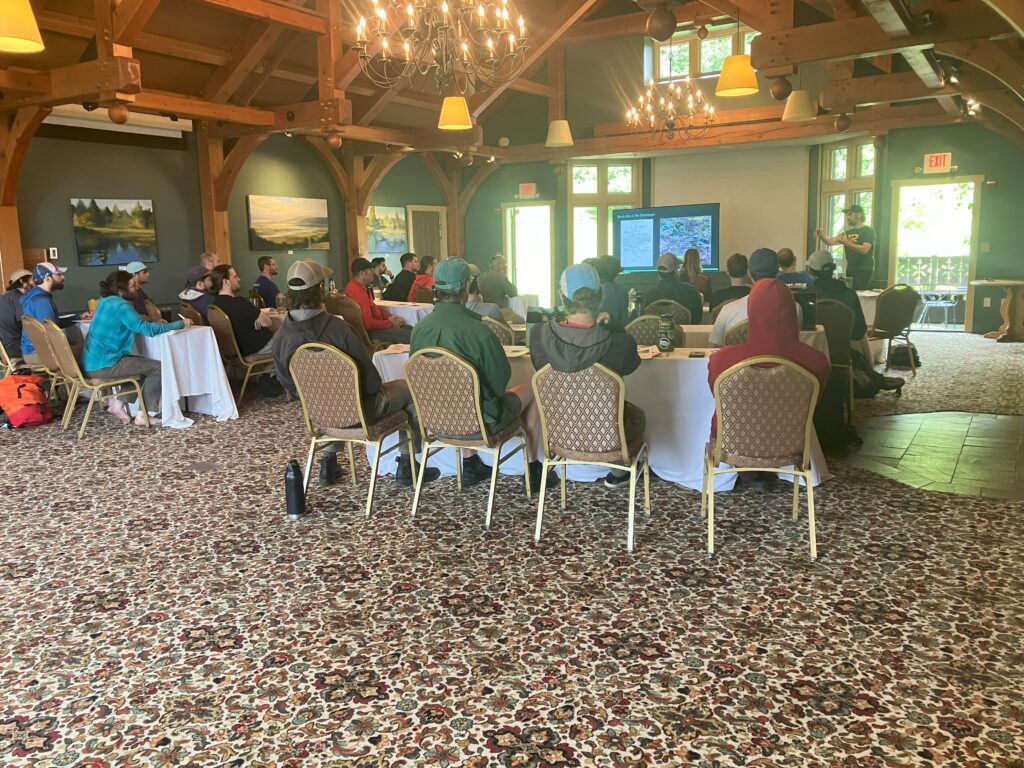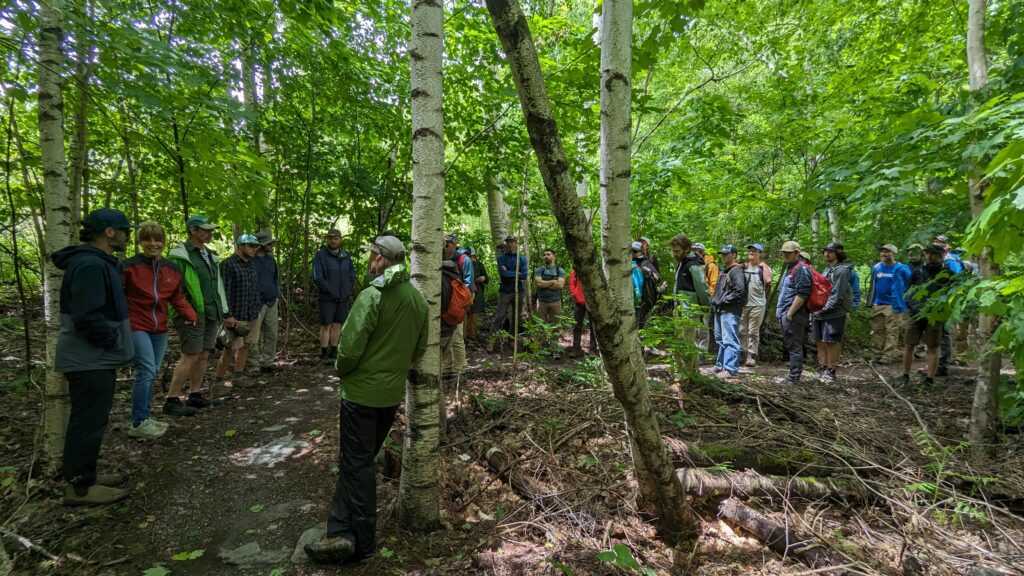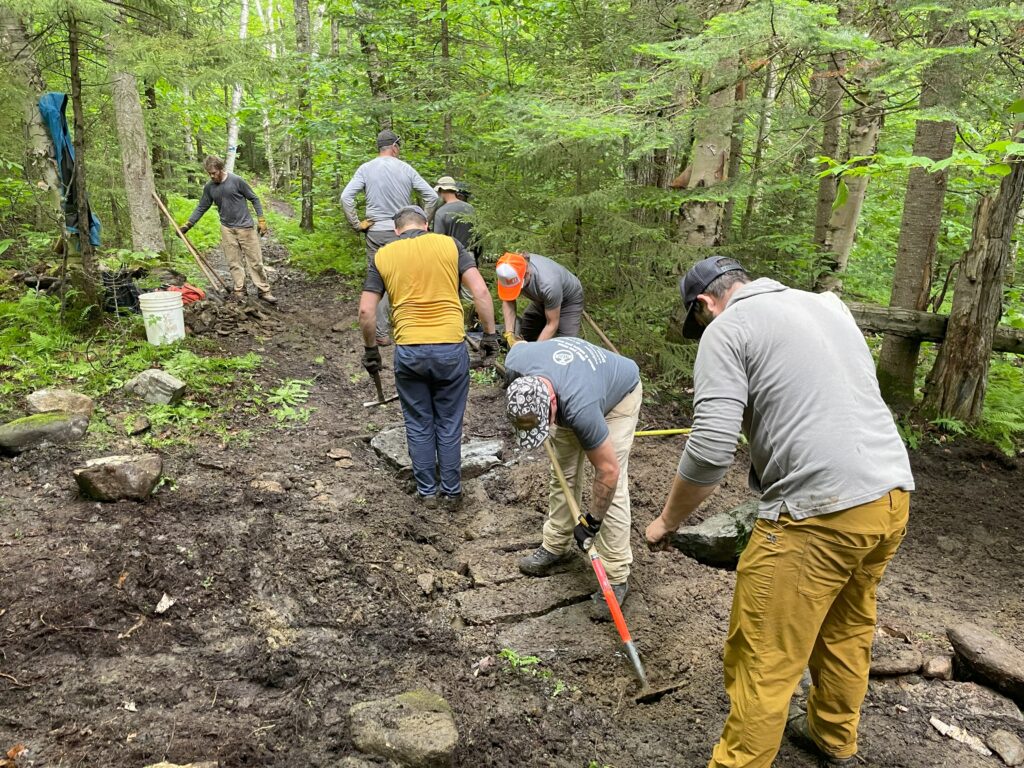Earlier this summer, VMBA held our Annual Trail Building Clinic for Chapters, graciously hosted by Stowe Trails Partnership with support from Trapp Family Lodge. Each year, the Trail Clinic brings together Chapter staff and volunteers from across the State to share in a weekend of learning, team building, and fun!
This year, we were fortunate to have veteran builder Knight Ide of IdeRide Builders lead the Clinic, which focused on Climate Resilience and – specifically – approaches to upgrading historical trails. Knight’s deep expertise in rockwork was on display as he walked Chapter attendees through methods for improving drainages, rock armoring, and reestablishing trail tread for maximum durability. While the focus for this year’s Clinic was set over the winter in response to last summer’s historic precipitation, the flooding in northern Vermont in July and again in August of this year only underscored the value of these climate resilience upgrades.

The two-day clinic kicked off with a classroom session at Trapp Family Lodge, providing an opportunity for Knight to review sustainable trail construction and design principles as well as specific techniques for trail improvements designed to better handle the increased rainfall we have seen the past two summers and expect to continue into the future. After lunch, we headed out in the field to identify specific issues and opportunities on nearby trails, including the critical Pipeline connector that links Cady Hill to Trapps and the trails beyond. The majority of attendees then mounted bikes and took an extended tour of Adam’s Camp, during which a surprise rainstorm helped showcase areas where drainage was working well as well as spots where additional hardening and/or water management would be welcome.

Sunday brought all ~30 participants out into the field at Sterling Forest, where Knight led a demo with specialized rock work equipment, showing the methods to shape each stone for the intended purpose. Attendees then headed out to the 8 Bridges trail to a section selected for rock armoring and put the past two days’ lessons to use. Throughout the day, participants commented on how rewarding it was to see the weekend’s learning come to lift in a rehabilitated section of trail, which itself was tested just a few weeks later during the July 11th storms.

Overall, 100% of participants who responded to our feedback survey found the Clinic ‘valuable’ or ‘highly valuable.’ We are deeply grateful for both Knight providing his time and expertise, but also to each and every attendee for giving their weekend to improve their own understanding of how to build better, more durable trails in their home networks.
Looking forward to next year’s Clinic!
